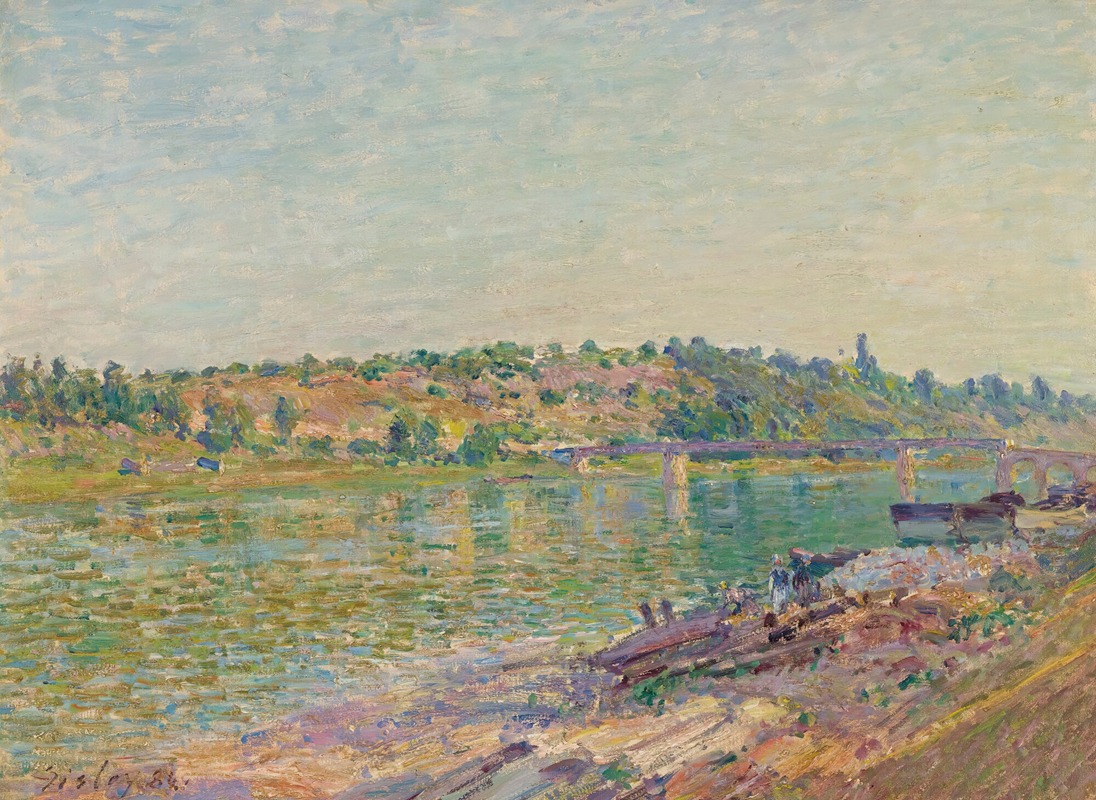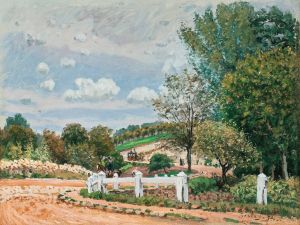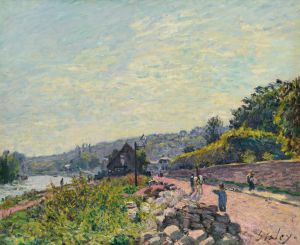
Les Coteaux De La Celle-Sous-Moret, Vus De Saint-Mammès
A hand-painted replica of Alfred Sisley’s masterpiece Les Coteaux De La Celle-Sous-Moret, Vus De Saint-Mammès, meticulously crafted by professional artists to capture the true essence of the original. Each piece is created with museum-quality canvas and rare mineral pigments, carefully painted by experienced artists with delicate brushstrokes and rich, layered colors to perfectly recreate the texture of the original artwork. Unlike machine-printed reproductions, this hand-painted version brings the painting to life, infused with the artist’s emotions and skill in every stroke. Whether for personal collection or home decoration, it instantly elevates the artistic atmosphere of any space.
Alfred Sisley, a prominent figure in the Impressionist movement, painted "Les Coteaux de la Celle-sous-Moret, vus de Saint-Mammès" in 1885. This artwork exemplifies Sisley's dedication to capturing the natural beauty of the French countryside, a recurring theme in his oeuvre. The painting depicts the rolling hills of Celle-sous-Moret as seen from the village of Saint-Mammès, located in the Île-de-France region near the confluence of the Seine and Loing rivers. Sisley lived in this area during the later years of his life, and its serene landscapes became a significant source of inspiration for his work.
The painting showcases Sisley's characteristic use of light and color to convey the atmosphere of the scene. The brushwork is loose and fluid, a hallmark of Impressionism, allowing the viewer to sense the movement of the air and the play of light across the terrain. The composition is balanced, with the hills and sky occupying much of the canvas, while the foreground features subtle details of vegetation and the riverbank. Sisley's palette in this work is dominated by soft greens, blues, and earthy tones, reflecting the tranquility of the rural setting.
"Les Coteaux de la Celle-sous-Moret, vus de Saint-Mammès" is one of many paintings Sisley created in this region, which he explored extensively. His works from this period often focus on the interplay between land, water, and sky, emphasizing the harmony of natural elements. This painting is a testament to Sisley's ability to transform ordinary landscapes into scenes of poetic beauty.
The painting is currently housed in the Musée d'Orsay in Paris, France, which holds an extensive collection of Impressionist and Post-Impressionist masterpieces. Sisley's work, though sometimes overshadowed by contemporaries such as Claude Monet and Pierre-Auguste Renoir, is celebrated for its lyrical quality and dedication to plein air painting. This particular piece is a fine example of his skill in capturing the essence of a specific place and moment in time.
Alfred Sisley was born in Paris in 1839 to British parents and spent most of his life in France. Despite his significant contributions to Impressionism, he struggled financially throughout his career and did not achieve widespread recognition during his lifetime. Today, his works are highly regarded for their subtlety and technical mastery, and "Les Coteaux de la Celle-sous-Moret, vus de Saint-Mammès" remains a notable example of his artistic legacy.


















